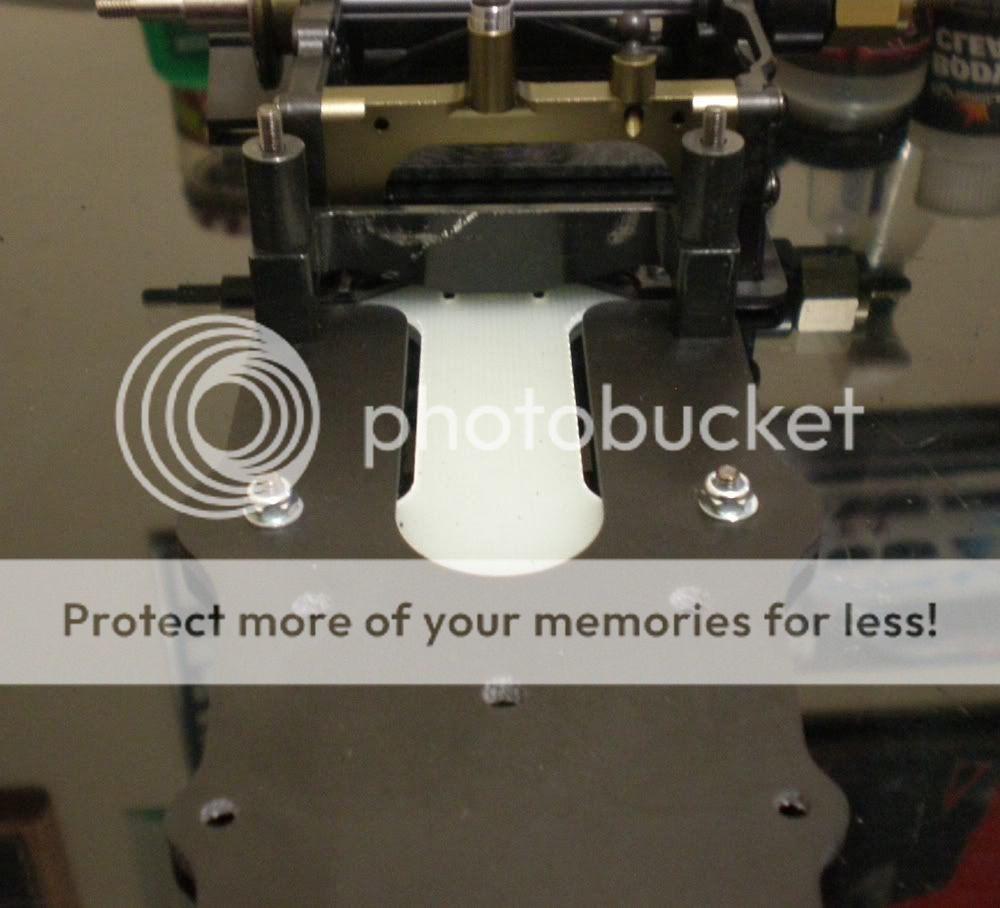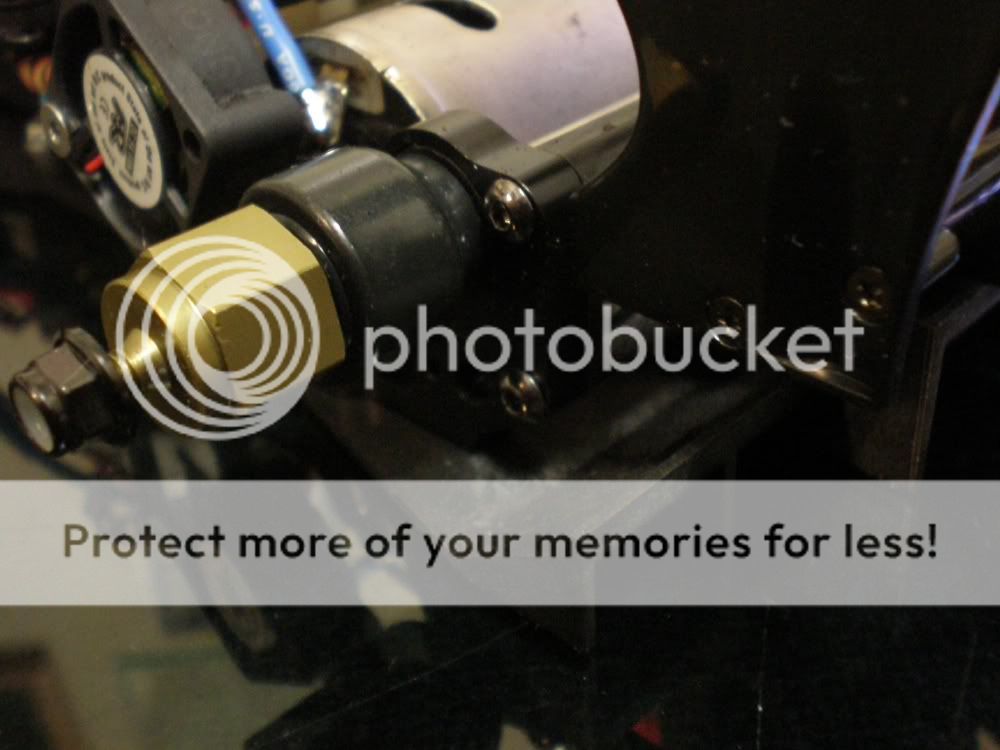I got a chance to work on the X1 car today and get things pretty well finished up. I have a few spots where I did some things different from the manual based on how I like to set up my current F104 for rubber tires.
I chose to use the Heavy Pivot Post as I have been using for a while. Generally, more weight is going to be helpful for rubber tire in all but the most high traction situations. As you can see I'm also not going to run any chassis posts. I feel like the car is better on bumpy tracks, as well as making more traction. One thing I did notice was that adding posts tended to tighten the car up, which sounds the opposite of taking away traction. To make a better explanation, the car would turn in but not finish the corner well. Without the posts, this went away.
Tamiya includes carbon graphite plastic parts for the pod. The parts are very light, in fact 13g vs. 26g for the aluminum pieces from the black car. They also include an aluminum motor spacer to help cool the motor. I do like the idea of saving 1/2 an ounce of unsprung weight on the pod, but for me cooling was a bigger factor. Running a silver can motor for TCS races makes the aluminum parts more desirable, knowing the motor will be running 150-160 F if everything is right. The idea of a plastic motor mount at that temperature is less than inviting. The other problem is that with a silver can, which has a very short output shaft, the pinion will not reach with the included aluminum motor spacer. I tried to attach a long shank Spec-R pinion, which I use just because the silver can shaft is short, and it still did not line up properly. I tend to think that this setup was designed more with brushless in mind.
This shot has the diff as well as the side damper which is one of the new features on the car. The side damper is of high quality. It built easily and needed no extra cutting or modification. Sometimes, the dampers with 1/12 kits require you to cut or resize the damper, but this was super easy to deal with. I put 5000 wt diff oil on the damper to start, since it's really an unknown at this point. I have been running with no damper at all, and that has worked great lately. I'm excited to see how the car works with the damper affecting roll only, which is the standard in 1/12 and WGT these days.
There also are some other nice options with the car. The Short Black spring set comes with the car, so you have all three shock springs with the kit. The aluminum camber plate comes with the car as well, not to mention the aluminum servo saver horn, both in the sweet gunmetal finish.
The diff is also assembled to my preference. I like to use the one piece thrust bearing instead of the standard bearing included in the kit. The one piece is the same as the F103 thrust bearing, and it is a direct drop in replacement for the standard bearing from the kit. I think it makes the diff smoother, and it should also last about forever. Standard bearings are not meant to be used as thrust bearings....
For the diff itself, I always use Associated silicone grease. It may not be a huge deal, but I have had good success with it. In addition, I sand the diff rings with a medium paper like 400 or 600 to help give the rings some bite and create good diff action. I like to use a plastic diff hub to sand the rings in a figure 8 motion on glass or another flat surface. You can use an aluminum hub, but I have plastic ones laying around, and I don't dirty up the nice aluminum parts.
Here's a decent shot of the new counterweight setup. The counterweight rides on two normal bearings, but there is a shim with a small tab that goes between the counterweight and the bearing in the pod on the steel axle. I'm not sure if the shim is supposed to help get the counterweight spinning to provide a gyro effect or what exactly the deal is. Eventually, we'll find out at the track...
The 3.5mm offset front axle is a popular upgrade for rubber tires to make the car a bit easier to drive. One problem is that the axles come apart if the very small screw holding the metal to the plastic unscrews itself. I like to glue the axle into the plastic, and then add some glue to the screw's threads before fastening it. This has been a good method to secure things permanently!
The camber plate is also in the lowered position I prefer. There are several posts on the front end setup I like on the blog if you are interested, so I won't rehash that here.
As I said when I started the post, this is just an initial rundown on the car. The biggest changes seem to be the damper and the counterweight, and both are going to be big unknowns until I get the car to the track.









No comments:
Post a Comment